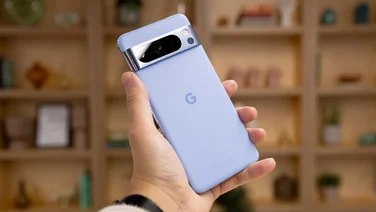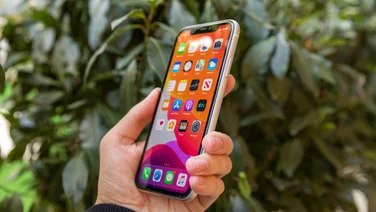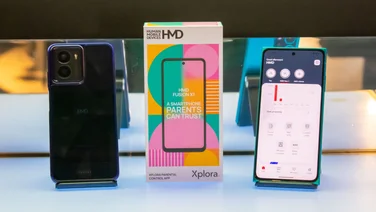To help us provide you with free impartial advice, we may earn a commission if you buy through links on our site. Learn more
- Google Pixel 4a 5G review: What you need to know
- Google Pixel 4a 5G review: Price and competition
- Google Pixel 4a 5G review: Design and key features
- Google Pixel 4a 5G review: Display
- Google Pixel 4a 5G review: Performance, battery life and software
- Google Pixel 4a 5G review: Cameras
- Google Pixel 4a 5G review: Verdict
- Excellent value
- Similar hardware to Pixel 5
- Long-lasting battery life
- Cheaper design
- No wireless charging
- No face unlock
The launch of the Pixel 4a 5G is a bit of an outlier. Google first announced its existence during the reveal of the regular Pixel 4a almost three months ago, and we’ve been waiting impatiently for its official release date ever since.
Well, the good news is that you don’t have to wait much longer. It’s finally on the way, and you’ll be able to get your hands on the beefed-up Pixel 4a 5G in just a few weeks.
READ NEXT: Best mid-range smartphones
Despite what you might think, though, Google didn’t just shoehorn 5G compatibility into the Pixel 4a. Sure, it can connect to the UK’s 5G network (provided you’re in a 5G area), but that isn’t really the key part of the Pixel 4a 5G’s appeal.
Google Pixel 4a 5G review: What you need to know
The Pixel 4a 5G offers much more than 5G connectivity. It’s a substantial upgrade on the Pixel 4a, with a faster Qualcomm Snapdragon 765 processor, a larger 6.2in OLED screen and a bigger 3,885mAh battery. It also has a secondary wide-angle camera, which sits next to the shared 12.2MP primary sensor.
The Pixel 4a 5G comes with 128GB of (non-expandable) storage, as well as 6GB of RAM and – along with the Pixel 5 – is the first smartphone to launch with Android 11 preinstalled.
Google Pixel 4a 5G review: Price and competition
As for price, the Pixel 4a 5G will cost £499 when it arrives in the UK on 19 November. By comparison, that’s £150 more expensive than the Pixel 4a, but £100 cheaper than the top-end Pixel 5.
When it comes to non-Google competitors, however, the Pixel 4a 5G faces up against the slightly more expensive OnePlus 8T (£550), Samsung Galaxy S10 Lite (£490) and Xiaomi Mi 10T (£469).
Google Pixel 4a 5G review: Design and key features
In an obvious attempt to keep costs to a minimum, the Pixel 4a 5G has a simple, polycarbonate plastic body, instead of an aluminium frame like the one found on the Pixel 5. It doesn’t have any official IP rating for dust and water protection, either, although the screen is protected from drops and scrapes with a layer of Gorilla Glass 3.
Speaking of which, the Pixel 4a 5G’s display stretches out across 6.24in, which is larger than both the Pixel 4a (5.81in) and Pixel 5 (6in). Its screen-bordering black bezels are slightly thicker in size than the Pixel 5’s, though not by much, and it has a neat hole-punch notch in the top-left corner.
The handset’s physical dimensions are quite pocketable, in fact, despite the large screen. Measuring 154 x 74 x 8.2mm (HWD), the Pixel 4a 5G is roughly the same size as the iPhone 11, although it is slightly taller, but it does weigh less at only 168g.
Flip the phone over, and you’ll spot the square camera array in the top-right corner, as well as a centrally placed fingerprint sensor. You’ll be using this a lot, too, since the Pixel 4a 5G (like the Pixel 5) no longer supports face unlocking.
As for the rest, the phone charges via USB-C (18W), which is located at the bottom of the handset, flanked by a pair of speaker grilles. A Parma Violet-coloured oblong power button can be found on the right edge next to the volume rocker, and a 3.5mm headphone jack (sorely absent on the Pixel 5) is on the top.
Google Pixel 4a 5G review: Display
Like the Pixel 5, the Pixel 4a 5G’s screen is an HDR-certified OLED panel with a resolution of 2,340 x 1,080, although it doesn’t have the same buttery smooth 90Hz refresh rate – instead, you have to make do with a bog-standard 60Hz.
Even so, the Pixel 4a 5G’s screen is exceptional for the price. Brightness peaks at 664cd/m² with auto-brightness enabled, which does the job for sunny days, and the phone’s ‘Normal’ display mode delivers 94.5% coverage of the sRGB gamut, with a total volume of 95.7%.
In terms of colour accuracy, the Pixel 4a’s 5G display achieved an average Delta E of 1.02 in this mode, which is astonishing. Colours across the board looked as good as can be, and even the most exacting eyes won’t be able to spot any inconsistencies.
Google Pixel 4a 5G review: Performance, battery life and software
Arguably, the Pixel 4a 5G’s most obvious upgrade can be found on the inside. Instead of using the Snapdragon 730G (found inside the regular Pixel 4a), the 5G model uses a Snapdragon 765G for processing duties and 5G connectivity, which is the same CPU that powers the more expensive Pixel 5. We’ve reviewed many 765G-powered smartphones in the last few months, including the Nokia 8.3 5G and OnePlus Nord, and the Pixel 4a 5G is no different in terms of performance.
The gap between the 765G and 730G isn’t as big as I would like, though, with the Pixel 4a 5G delivering similar performance speeds in both single- and multi-core processing when compared against the Pixel 4a in the Geekbench 5 test. This casts a particularly harsh light when you put the results up against its flagship CPU-toting rivals such as the Galaxy S10 Lite and OnePlus 8T – these phones are significantly faster in the same test.

Still, I would argue that the Pixel 4a 5G’s processing speeds are ideal for most people’s needs, with only the die-hard power user running into any issues. Apps loaded in the blink of an eye, the phone was fast to boot up and navigating the user interface felt buttery smooth. The Pixel 4a 5G also has 6GB of RAM as well as 128GB of internal storage, which sadly can’t be expanded via microSD.
The Pixel 4a 5G is singing the same tune in terms of graphical performance, too. Achieving an on-screen result of 28fps in the GFXBench Manhattan 3 test, the Pixel 4a 5G will run most titles on the Google Play Store at a playable level, but it won’t be running your favourite mobile games at particularly high frame rates.

The Pixel 4a 5G pulls away from the regular Pixel 4a in terms of stamina, though. With a larger 3,885mAh battery, the Pixel 4a 5G lasted for 23hrs 39mins in our video playback test, which is almost five hours longer than the Pixel 4a under the same conditions. Unlike the Pixel 5 it doesn’t support wireless charging.

Before we move on, it’s worth mentioning that the Pixel 4a 5G, as well as the Pixel 5, is also the first phone to launch with Android 11 preinstalled – other phones will have to wait at least a few months for the update.
You can read more about what’s new with Android 11 in my Pixel 5 review, but the key features include a screen recorder located in the settings dropdown, as well as media controls above the notification drawer and the option to control any connected smart devices when you press and hold the power button.
Google Pixel 4a 5G review: Cameras
The Pixel 4a 5G doesn’t just share the Pixel 5’s innards. It also has a dual-camera array, which consists of the same 12.2MP (f/1.7) primary camera and 16MP (f/2.2) ultra-wide unit – that’s one more lens than the Pixel 4a. All three phones share the same 8MP (f/2.0) selfie camera, which is punched into a small hole in the top-left corner of the display.

How did I get on with the cameras? Well, unsurprisingly, I had the exact same experience as I did with the Pixel 5. The 4a 5G’s camera capabilities are astonishing, and the fact that it shares the same shooting accomplishments as the Pixel 5 but at a lower price is nothing short of exceptional.

What this means is that you’re getting a pair of rear cameras that excel in terms of colour reproduction, with detail-rich images and accurately judged blurred-background portraits. The Pixel 4a 5G’s ‘Night Sight’ shooting mode – which now works in portrait – remains the standout feature, which boosts the brightness of images without adding too much visual noise or producing an unnaturally warm colour cast (which plagues the iPhone 11).

The camera software itself is simple and easy to use, too. You can cycle through the various shooting modes via simple swipes at the bottom of the screen and access certain settings within the chosen mode by pulling down the menu at the top. This allows you to change the video resolution and framerate, for instance, as well as switch through the different stabilisation settings – including a new ‘Cinematic Pan’ mode – and adjust the level of face beautifying effects.
Finally, as for video, the Pixel 4a 5G can record fully stabilised footage at up to 4K resolution at 60fps (the Pixel 4a is restricted to 30fps at 4K). Videos in this mode look crisp and judder-free, and the Pixel 4a 5G did a mighty fine job overall, even in low-light conditions.
Google Pixel 4a 5G review: Verdict
It’s top marks for the Pixel 4a 5G. Smashing clear through my expectations, the middle child of the new Pixel family is tremendous value for money, and Google has somehow stumbled on the secret ingredient when it comes to offering high-level features at the fraction of the cost of pricey flagships.
If you’re keen on the Pixel 5 but you’d rather save the extra £100 (and don’t mind sacrificing just a couple of features) then the Pixel 4a 5G is absolutely the next best thing. In other words, you’ll be immensely happy with the Pixel 4a 5G, and your wallet will thank you, too.
| Google Pixel 4a 5G specifications | |
|---|---|
| Processor | Octa-core Qualcomm Snapdragon 765G (1×2.4GHz, 1×2.2GHz, 6×1.8GHz) |
| RAM | 6GB |
| Screen size | 6.2in |
| Screen resolution | 23,40 x 1,080 |
| Pixel density | 413ppi |
| Screen type | OLED |
| Screen refresh rate | 60Hz |
| Front camera | 8MP (f/2.0) |
| Rear camera | 12.2MP (f/1.7), 16MP wide (f/2.2) |
| Flash | LED |
| Dust and water resistance | No |
| 3.5mm headphone jack | Yes |
| Wireless charging | No |
| USB connection type | USB-C |
| Storage options | 128GB |
| Memory card slot (supplied) | No |
| Wi-Fi | 802.11ac |
| Bluetooth | 5 |
| NFC | Yes |
| Cellular data | 5G, 4G |
| Dual SIM | No |
| Dimensions (WDH) | 154 x 74 x 8.2mm |
| Weight | 168g |
| Operating system | Android 11 |
| Battery size | 3,885mAh |





